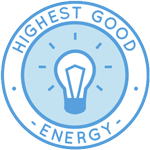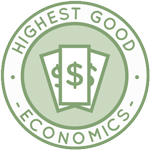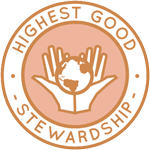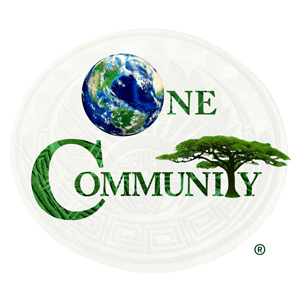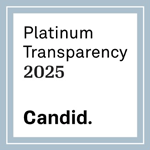Achieving Humanity’s Eco-potential – One Community Weekly Progress Update #432
Achieving humanity’s eco-potential is something that isn’t even really being discussed yet. As a society, we’re still trying to figure out how to just be sustainable enough to avoid catastrophe. We’re capable of so much more though. We can be stewards that manage and improve our world to meet the needs of every person if we want to. This is what One Community is focused on and we’re creating the open source plans for sustainable teacher/demonstration hubs capable of making it happen.
- Here’s our project overview
- Here’s our world-change methodology
- Here’s how this becomes self-replicating
- Here’s how we are open source and free-sharing all the do-it-yourself designs

OUR MAIN OPEN SOURCE HUBS
Click on each icon to be taken to the corresponding Highest Good hub page.
One Community’s physical location will forward this movement as the first of many self-replicating teacher/demonstration communities, villages, and cities to be built around the world for achieving humanity’s eco-potential. This is the July 4th, 2021 edition (#432) of our weekly progress update detailing our team’s development and accomplishments:
Achieving Humanity’s Eco-potential
One Community Progress Update #432
DONATE | COLLABORATE | HELP WITH LARGE-SCALE FUNDING
CLICK HERE IF YOU’D LIKE TO RECEIVE AN EMAIL EACH WEEK WHEN WE RELEASE A NEW UPDATE
YOU CAN ALSO JOIN US THROUGH SOCIAL MEDIA
Achieving Humanity’s Eco-potential
ONE COMMUNITY WEEKLY UPDATE DETAILS
ACHIEVING HUMANITY’S ECO-POTENTIAL – HIGHEST GOOD HOUSING PROGRESS
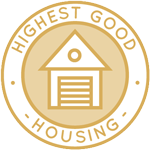 One Community is achieving humanity’s eco-potential through Highest Good housing that is artistic and beautiful, more affordable, more space efficient, lasts longer, DIY buildable, and constructed with healthy and sustainable materials:
One Community is achieving humanity’s eco-potential through Highest Good housing that is artistic and beautiful, more affordable, more space efficient, lasts longer, DIY buildable, and constructed with healthy and sustainable materials:
- Learn about: Our Upcoming Crowdfunding Campaign
- Learn about the different village models: 7 Sustainable Village Models
- Visit the open source portals for the first two: Earthbag Village OS Hub | Straw Bale Village OS Hub
This week the core team continued edits and additions to the “Best Small and Large-scale Plastic Recycling, Reuse, and Repurposing Community Options ” article. This week we resized images to our standard width of 640px and added them into the page, embedded more videos that were missing, worked on the index of the page, and started to check that every link worked properly.
The pictures below share some of this developing work for achieving humanity’s eco-potential.
The core team also updated the layout of the plywood for the loft floor for the Earthbag Village Dome Home Loft Engineering page.
Jose Luis Flores (Mechanical Engineer) completed his 50th week helping finish the Net-zero Bathroom component of the Earthbag Village. This week Jose Luis began adding the results of the maximum roof size with and without external columns when snow is present.
He began by explaining the circumstances when building structures in snowy climates and the assumptions used to determine the maximum roof size and the maximum allowable snow depth for achieving humanity’s eco-potential. To illustrate the snow on the roof, Jose Luis utilized the SolidWorks model with and without the external columns.
With the illustrations he was able to form a free body diagram for both instances. With 30in of snow as the depth, it was found that the original roof size without additional supports could not support the weight.
The maximum snow depth the roof could handle was calculated instead and found to be 3.8in. Jose Luis then proceeded to elaborate the calculations and graphs used to determine the maximum roof size with external supports when 30in of snow is on the roof.
He concluded his calculations in the narrative, with suggestions such as wooden columns with larger cross-sections or additional supports in the case of there being more than 30in of snow. The pictures below show some of this work.
Katherine Cao (Chemical Engineer) also completed her 6th week working on the grid-tie connection details for our solar microgrid designs. This week Katherine read the Garkane New Construction Handbook, and wrote our grid tie construction step and cost estimates based on it for achieving humanity’s eco-potential.
Katherine also re-wrote the introduction part based on supervisor’s feedback. Moreover, Katherine proofread the whole report written by her, and made changes, did editing and formatting, and submitted it for feedback. Pictures below are related to this work.
Prabhath Ekanayake (Electrical Engineering Assistant) completed his 5th week working on the grid-tie connection details for our solar microgrid designs. This week Prabhath completed his areas of research and then proofread everything and submitted it for feedback. Below are some images related to this work.
Nicholas K. de León (Project Management Adviser) completed his 4th week helping with review of Highest Good Housing research and related tasks. Nicholas returned this week and started with looking over the energy reports’ edits that had been made per suggestions from previous weeks. So far those that have been made looked good and many were cleared.
Nicholas also got back to working on the bracket research for the City Center and summarized the viable information in a spreadsheet. Nicholas also worked on editing the Rabbit Stewardship article, getting more familiar with WordPress and direct adjustments in the process. Pictures below show some of this work-in-progress.
Shreyas Dayanand (Battery Research Engineer) also joined the team and completed his first week helping with the solar microgrid design specifics related to electric vehicles and battery sizing.
This week Shreyas completed his onboarding tasks and started planning the Electric Vehicle and charging infrastructure for the community. He researched the options and segregated information regarding 5 golf carts and 1 Tesla model 3 with respect to their commercial, battery options and charging requirements.
Shreyas started to find feasible options for 100% off-grid storage for the Solar-Farm application too working towards achieving humanity’s eco-potential. Pictures below relate to this work-in-progress.
ACHIEVING HUMANITY’S ECO-POTENTIAL – DUPLICABLE CITY CENTER PROGRESS
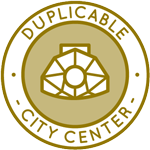 One Community is achieving humanity’s eco-potential through a Duplicable and Sustainable City Center that is LEED Platinum certified/Sustainable, can feed 200 people at a time, provide laundry for over 300 people, is beautiful, spacious, and saves resources, money, and space:
One Community is achieving humanity’s eco-potential through a Duplicable and Sustainable City Center that is LEED Platinum certified/Sustainable, can feed 200 people at a time, provide laundry for over 300 people, is beautiful, spacious, and saves resources, money, and space:
- Learn about this building and it’s function: Duplicable City Center Open Source Hub
This week the core team continued review and feedback on the Sustainable Roadways, Walkways, and Landscaping tutorial for achieving humanity’s eco-potential. We reviewed the new additions to the Landscaping section on pages 66-69.
We also resolved comments throughout the doc up to about page 69 and addressed the recent comments within this section. We then reviewed and edited the remainder of the handrail section beginning on page 76 and continued through the Bicycle Design section pages 79-86 and followed up with Road Design Specifics beginning on page 86-91, and then reviewed Porous Asphalt Design on pages 92-97. Pictures below show some of this work-in-progress.
The core team also started double checking all the angles for the City Center hub connector work.
Ian Oliver Malinay (Energy Modeler/Analyst) completed his 25th week helping run the energy analysis calculations to help us achieve LEED Platinum status for the Duplicable City Center. This week, Ian updated the energy modeling narrative documents.
He included in the documents the ASHRAE 90.1 requirements/tabulation of requirements for us to determine if the inputs are above the energy performance of the baseline.
It is important that the energy efficiency of the proposed building design be more efficient than the baseline design for us to achieve the LEED Platinum Certification. We will measure the energy savings after we simulate the baseline design. Please see below updated progress photos for reference.
David Na (Project Management Adviser/Engineer) completed his 19th week helping with input and management of the Parking Lot and Sustainable Roadways, Walkways, and Landscaping tutorial development, as well as the City Center Water Catchment Designs.
This week David began by reviewing and preparing the action items for his team working towards achieving humanity’s eco-potential. He used the progress updates doc to verify which items still need work and delegated tasks.
He also worked on a cold climate hydrology paragraph for our location’s drainage plan, because our state is a state that sees an annual snowfall of approximately 22 inches. David also prepared a preliminary parking lot design for the parking lot. Pictures below are related to this work.
Rushabh Bhavsar (Mechanical Design Engineer) completed his 11th and final week helping with the City Center Eco-spa designs. Rushabh updated the final report on the City Center hot tub spa.
He researched further about the foundation materials used for in-ground hot tubs, comparing Aircrete and cinder blocks with traditional materials and then incorporating this into the model as our solution for achieving humanity’s eco-potential.
Rushabh updated the model removing the air line and making graphics and flow diagrams of the foundation as well as the piping layout. Pictures below relate to this work from last week.
Carol Nguyen (Civil Engineer) also completed her 10th week helping with the Sustainable Roadways, Walkways, and Landscaping tutorial development.
This week, Carol worked on adding details and making changes to her AutoCAD drawing according to David’s new comments and suggestions for sump pump construction details.
In addition, she also wrote the introduction paragraph for the “Sustainable Roadways, Walkways, and Landscaping Details” section. Furthermore, Carol edited the “Landscaping” section about native plants and other sections based on feedback. The pictures below share some of this developing work.
Neel Shanbhag (Control Systems Electrical Engineer) completed his 4th week helping with the Duplicable City Center Electrical designs. This week Neel finished working on the cut sheets, matched the properties, and also updated the spreadsheet and the dropbox. Pictures of some of this work are below.
John Aquino (Electrical Engineer) also completed his 3rd week helping lead the Duplicable City Center Electrical designs. This week, John updated the base plan backgrounds per the City Center Master drawing file.
Additionally, the Equipment subfolder within the Electrical folder has been organized to include Kitchen, Mechanical, and Electrical equipment. Initial specifications for electrical equipment to serve HVAC equipment has been provided. Project set-up document is still a work-in-progress. Pictures below show some of this work.
ACHIEVING HUMANITY’S ECO-POTENTIAL – HIGHEST GOOD FOOD PROGRESS
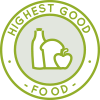 One Community is achieving humanity’s eco-potential through Highest Good food that is more diverse, more nutritious, locally grown and sustainable, and part of our open source botanical garden model to support and share bio-diversity:
One Community is achieving humanity’s eco-potential through Highest Good food that is more diverse, more nutritious, locally grown and sustainable, and part of our open source botanical garden model to support and share bio-diversity:
- Learn about the structures: Hoop House Hub | Aquapini & Walipini Open Source Hub
- See what we’ll be growing: Gardens & Hoop Houses | Large-scale Structures | Food Forest | TA
This week the core team continued creating updated SketchUp models for the final designs of the Aquapinis/Walipinis. We replaced the viewer access landing area with a staircase next to the corner pond with boulder steps/resting area, as was in the previous design.
We also added 4×4 support beams under the media beds and showed measurement with two designs of support posts. When then worked on the central area design with 4′ wide walking access and a couple of different shaped small water pools, and a round waterfall next to the entry door. Pictures below are related to this work.
This week Qiuheng Xu (Landscape Designer) completed her 39th week volunteering, now helping with the Aquapini & Walipini external landscaping details. This week Qiuheng revised the Aquapini and Walipini SketchUp model based on last week’s feedback. She also did a rough sun study in SketchUp and adjusted the plants based on it. Pictures below are related to this work.
ACHIEVING HUMANITY’S ECO-POTENTIAL – HIGHEST GOOD EDUCATION PROGRESS
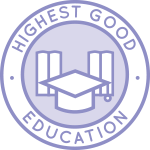 One Community is achieving humanity’s eco-potential through Highest Good education that is for all ages, applicable in any environment, adaptable to individual needs, far exceeds traditional education standards, and more fun for both the teachers and the students.
One Community is achieving humanity’s eco-potential through Highest Good education that is for all ages, applicable in any environment, adaptable to individual needs, far exceeds traditional education standards, and more fun for both the teachers and the students.
This component of One Community is about 95% complete with only the Open Source School Licensing and Ultimate Classroom construction and assembly details remaining to be finished. We’ll report on the final two elements to be finished as we develop them.
With over 8 years of work invested in the process, the sections below are all complete until we move onto the property and continue the development and open sourcing process with teachers and students – a development process that is built directly into the structure of the education program and everything else we’re creating too:
- Program Overview: Education Open Source Hub
- How the components work together: How to use the Education for Life Program
- Lesson Plans for Life – Lesson Plans How-to
- Foundations of Outstanding Leaders, Teachers, and Communicators
- Curriculum for Life
- Teaching Strategies for Life
- Learning Tools and Toys for Life
- Evaluation and Evolution
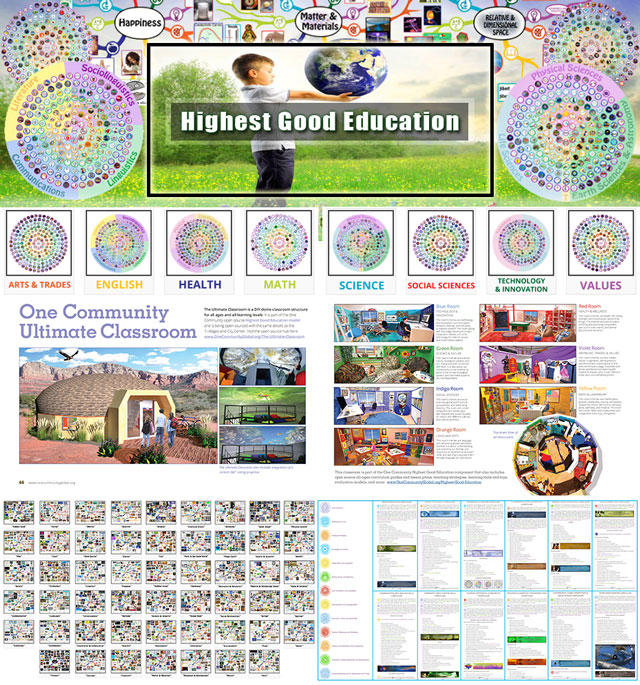
Highest Good Education: All Subjects | All Learning Levels | Any Age – Click image for open source hub
ACHIEVING HUMANITY’S ECO-POTENTIAL – HIGHEST GOOD SOCIETY PROGRESS
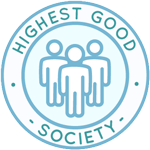 One Community is achieving humanity’s eco-potential through a Highest Good society approach to living that is founded on fulfilled living, the study of meeting human needs, Community, and making a difference in the world:
One Community is achieving humanity’s eco-potential through a Highest Good society approach to living that is founded on fulfilled living, the study of meeting human needs, Community, and making a difference in the world:
- Read the Highest Good society overview: Highest Good Society
- Learn about the model for fulfilled living and sharing: A Day in the Life
- Learn about the 4 economic models: RBE | For-profit | Non-profit | Entrepreneurship
- Learn about our open source community collaboration and management software: The Highest Good Network
This week the core team completed 34 hours managing One Community emails, social media accounts, interviewing potential new volunteer team members, and managing volunteer-work review and collaboration not mentioned elsewhere here. Also more testing and bug identification was done within the Beta version of the Highest Good Network software.
The core team also completely updated the badges outline for the Highest Good Network software team to follow for creation of the next round of functionality there.
Jaime Arango (Graphic Designer) completed his 31st week helping, returning to creating images for the One Community Updates Blogs like this one spreading the vision.
This week Jaime created images for weekly progress updates #502, #503, #504, #505, and #506. You can see all these new images below.
Chris Weilacker (Software Engineer) completed his 29th week working on the Highest Good Network software. This week Chris created the DB schema and mockups for the Materials/Items input component, he stubbed out the Inventory APIs and wrote comments on how to implement for OJ to work on, created the Cronjob to award badges, and started working on the infringement streak type. Pictures below are related to this work.
Yueru Zhao (Software Engineer) completed her 20th week working on the Highest Good Network software. This week Yueru mainly worked on making the filters have more than one option in the same filter list.
Now the users can select both food and housing in classification filters. She also added the resources number to the collapse button. The pictures below are related to this work.
Malathi Perumal (Beta Testing Tester) completed her 5th week working on the Highest Good Network software. This week Malathi merged PR #161 and validated the #161 fix to summary due date related functionalities for the user profile.
She also merged PR #57 and validated the timer fix and related functionalities for the user profile. Malathi also set up the local env on her machine. See below for pictures related to this work.
OJ Alcaraz (Software Engineer) also joined the team and completed his 1st week working on the Highest Good Network software. This week OJ obtained github repo access and cloned the front/back end to his local and followed the document provided to setup his local environment.
He wrote user stories for upcoming work for the team, installed Compass to use as a GUI to the MongoDB database, and started working on the API for the inventory controller. OJ also spent time getting up to speed with Node Express and MongoDB. The pictures below relate to this work.
And, last but not least, Jin Hua (Web Marketer and Graphic Designer) helped us get mailchimp set up and tested as our new newsletter system. The pictures below share some of this developing work.
AND WE PRODUCED THIS WEEKLY UPDATES BLOG – CLICK HERE TO SUBSCRIBE
FOLLOW ONE COMMUNITY’S PROGRESS (click icons for our pages)
INVESTOR PAGES
GET INVOLVED
DONATE | WAYS ANYONE CAN HELP | MEMBERSHIP
CLICK HERE FOR ALL PAST UPDATES
 One Community
One Community